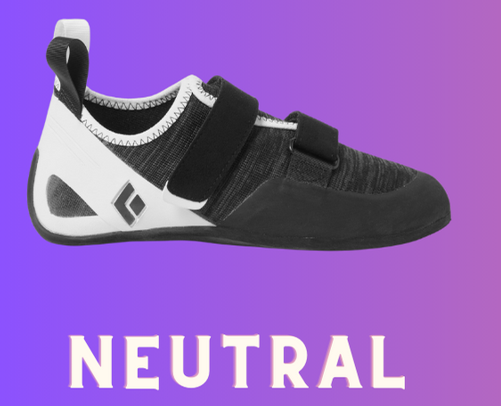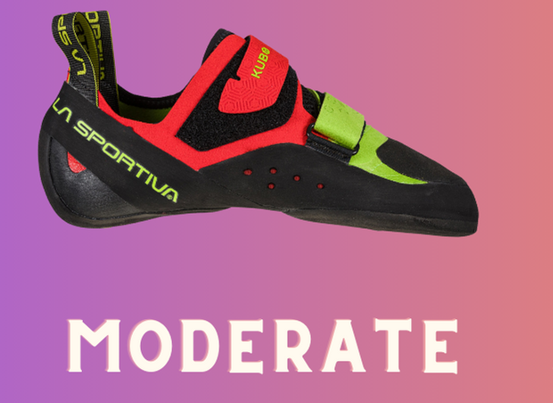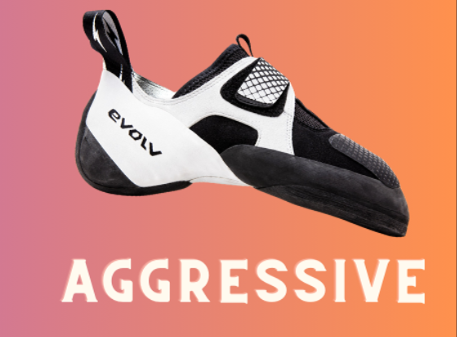Understanding Rock Climbing Shoes
Rock climbing shoes are a specialized type of footwear designed to help climbers secure footholds and protect their feet while scaling vertical surfaces. The right pair of climbing shoes can greatly enhance a climber's performance, providing the necessary grip, precision, and comfort needed to tackle various types of climbs.
Types of Climbing Shoes
Climbing shoes are categorized into three main types based on their shape and intended use:
Neutral Climbing Shoes
Neutral climbing shoes are characterized by their relatively flat profile, which allows the toes to lie flat inside the shoe, providing a more natural and comfortable fit. These shoes are designed for all-day comfort, making them an excellent choice for beginner climbers or those engaging in long multi-pitch climbs where comfort is so important over extended periods. The soles of neutral shoes are typically thicker and stiffer, offering good support but less sensitivity compared to moderate and aggressive shoes. Their relaxed fit and comfort make them less suited for difficult overhanging routes but excellent for slab routes, crack climbs, and slightly overhung sport routes.

Here's a breakdown we made for climbers looking for their first pair of climbing shoes: Our 5 Recommendations for the Best Beginner's Rock Climbing Shoes
Moderate Climbing Shoes
Moderate climbing shoes feature a slightly downturned shape, also known as camber, which positions the foot for more technical climbing. This design puts your feet into a stronger, more powerful position than neutral shoes, aiding in climbing more challenging routes. Moderate shoes typically have stickier rubber and thinner soles than neutral shoes, providing better grip and feel on the rock. While they offer a balance between performance and comfort, they are not as performance-oriented as aggressive shoes, making them less ideal for very steep or overhung routes. However, they are more comfortable than aggressive shoes and can handle a wide variety of climbing styles, including technical face climbing and slightly overhung walls.

Aggressive Climbing Shoes
Aggressive climbing shoes are distinguished by their pronounced downturned toes and significant heel tension, which puts the foot in a powerful position ideal for tackling steep, overhung routes. These shoes are designed to focus power over the toe for precise placements on small holds, making them the preferred choice for sport climbs, bouldering problems, and gym routes where performance is key. The aggressive shape and snug fit enhance the ability to stand on tiny footholds, but this design also makes them less comfortable for extended wear and less suitable for fitting into cracks or smearing as effectively as neutral or moderate shoes. Aggressive shoes typically feature stickier rubber and thinner soles for optimal grip and sensitivity, though this can lead to faster wear.

How to Choose Which Style of Climbing Shoe to Buy
The choice between aggressive, moderate, and neutral rock climbing shoes depends on the climber's skill level, the type of climbing they intend to do, and their preference for comfort versus performance. Neutral shoes are best for beginners or long, comfortable climbs; moderate shoes offer a balance suitable for a wide range of climbing activities with a mix of comfort and technical capability; and aggressive shoes are tailored for advanced climbers seeking maximum performance on steep, challenging routes.
Climbing Shoe Features
Climbing shoes come with a variety of features that influence their performance:
- Materials: The uppers can be made from leather or synthetic materials. Leather shoes tend to stretch and conform to the foot's shape, while synthetic shoes maintain a consistent fit with minimal stretch.
- Closure Systems: There are three common closure systems: lace-up, strap (hook-and-loop), and slip-on. Lace-ups offer a customizable fit, straps provide quick on and off convenience, and slip-ons deliver the highest sensitivity.
- Last Shapes: The last is the mold around which the shoe is constructed. Last shapes can be straight, asymmetric, or downturned, each affecting the shoe's fit and climbing performance.
- Outsole: This is the rubber part of the shoe that contacts the rock. Different rubbers offer varying levels of grip and durability. Thicker outsoles provide more support and durability, while thinner ones offer better sensitivity.
Climbing Shoe Fit
A proper fit is essential for climbing shoes. They should be snug but not painfully tight. To find the right fit:
- Shop in the afternoon when feet are slightly swollen.
- Try on multiple models and sizes.
- Keep in mind that climbing shoes are typically worn without socks.
- Ensure there's no dead space and the heel fits snugly.
Sizing Climbing Shoes
Sizing can vary between brands and models. It's often recommended to start with your street shoe size and adjust based on fit and personal preference. Some climbers choose shoes a few sizes smaller for a tighter fit, but comfort should not be overlooked.
Rubber Types
Different brands use various rubber compounds, each with unique properties. Some rubbers are known for their durability and precision, while others are prized for their friction and grip.
Brands and Origin
Popular climbing shoe brands include:
| Brand | Origin |
|---|---|
| La Sportiva | Italy |
| Mad Rock | Korea |
| Red Chili | Spain |
| Scarpa | Italy |
| Evolv | USA |
| Black Diamond | USA |
Conclusion
Selecting the right rock climbing shoes involves considering the type of climbing, desired features, and ensuring a proper fit. The right shoes can make a significant difference in your climbing experience, providing the grip, comfort, and confidence needed to excel on the rock.

